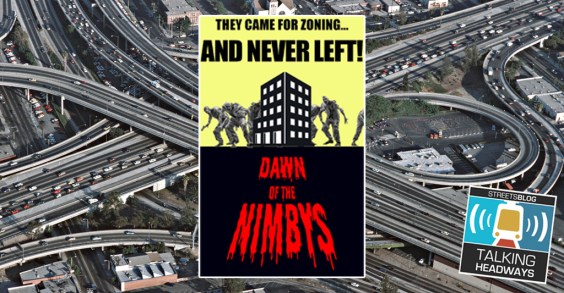
My wife and I were married last month in Brooklyn. For our honeymoon, we wanted to see as many great American cities as we could. In 19 days of travel, we visited Chicago, Seattle, Portland (Ore.), San Francisco, Los Angeles and New Orleans (and also stopped briefly in Cleveland, Milwaukee, Minneapolis, Houston, Atlanta, Washington, Baltimore and Philadelphia).
How could two people as obsessed as we are with minimizing our transportation carbon footprints possibly justify taking so many flights for leisure travel? We didn't take any flights. We also didn't rent any cars or even set foot in a single taxi. We learned that thanks to the magic of transit-oriented hotel development (often inadvertent), it is entirely possible to travel this great country from sea to shining sea without any of those carbon-belching modes of travel -- and still have a fantastic time.
Our intercity travel consisted of 33 miles on Metro-North (because we couldn't allow ourselves to depart for such a historic trip from Penn Station), 48 miles on CalTrain, and 7,840 miles on our underfunded national railroad, Amtrak. To travel about in town, we rented bikes in Portland but mostly used an amazing variety of light rail, bus and subway transportation, including trips on Chicago's El, Portland's TriMet light rail, San Francisco's Muni and BART and New Orleans' streetcars. All of which worked perfectly well for our purposes.
Despite the large number of transit providers, it was Amtrak that did the heavy lifting and made our vacation possible. Amtrak employees are painfully aware of the railroad's reputation as habitually late. They desperately wanted to provide an on-time, high quality service, but were demoralized when the trains ran late and frustrated because it was almost always for reasons beyond their control.
We took six Amtrak trains more or less through the entire length of their routes: The Lake Shore Limited, the Empire Builder, the Cascades, the Coast Starlight, the Sunset Limited and the Crescent. All of these trains left their departure stations on time to the minute. It wasn't until we got moving that delays occured, and these were caused by chronic underinvestment in rail infrastructure that has left many lines with just a single track. The lines are owned by freight railroads, which Amtrak pays for the rights use. The freight railroads are in increasingly intense competition with one another for customers, and have a habit of having passenger trains wait at a siding while freight trains roll through. Despite this, the Empire Builder managed to travel 2,206 miles from Chicago to Seattle and still arrive 38 minutes ahead of schedule. If our national government invested in rail improvements just a fraction of the billions of dollars it spends annually on highway maintenance and widening, Amtrak would run on time and more people would ride it.
As gasoline prices have gone up and congestion at airports has increased, Amtrak has had record ridership for multiple years in a row, despite being starved by the Bush administration, which wanted to disband the railroad, and the Republican-led Congress. Many threats remain. On the day we rode rode the Sunset Limited across Texas, a Republican congressman from Texas introduced legislation that would have eliminated the Sunset Limited. (It was defeated with the help of our region's congressional delegation by a vote of 299-130.)

But the trains are still running and we had the time of our lives on this trip. Even if its running late, and even if they've replaced the chefs in the dining car with microwave ovens, there remains something inherently enjoyable and relaxing about riding on a train across vast distances. You have time to yourself to sit and watch the world roll by, completely stress free, and sleeping in a real honest-to-God bed while rolling along through the undulating darkness is just incomparable to anything else experienced in travel. Now with the addition of laptop computers, you can watch a DVD or play tetris to pass the time, but I prefer to leave the screen off and look out the window.
This is the first part of a five-part series on our travels to run this week. Parts two and three will focus on the cities we visited, with brief updates on their struggles for livable streets. Part four will describe in greater detail the trains we rode and the sights we saw. Part five will compare the cities to one another in terms of livable streets, pedestrian-friendly development and intermodal transportation.
The great American poet Robert Hunter has written that he and the other members of the Grateful Dead had the greatest time of their lives aboard a train across Canada that carried themselves, Janice Joplin, The Band and many other musicians. That's high praise from people who spent their lives rocking out. The trip inspired Hunter to write some lines that became the motto for our honeymoon:
No big hurry
What do you say
Might as well travel
The elegant way
UPDATE: Here are the other entries in this series:





